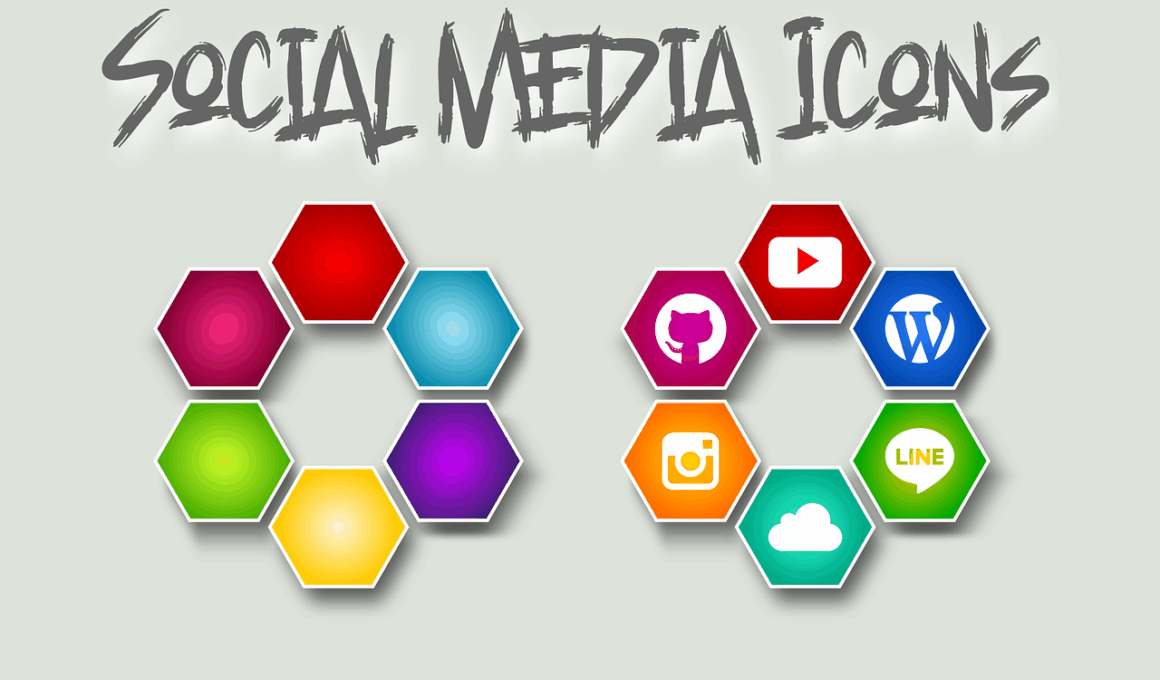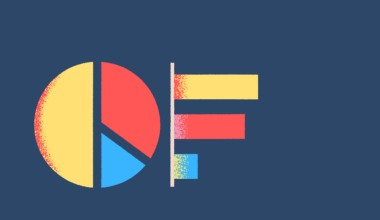Interactive Charts and Graphs for Social Media Performance Tracking
Social media has become an integral part of our lives, influencing how we communicate and interact. Evaluating social media performance is vital for businesses to understand their online presence better. Utilizing interactive charts and graphs enhances the process of analyzing social media data significantly. These visual representations help in identifying trends, understanding audience engagement, and optimizing content strategies. There are various tools available that allow users to visualize data effectively, providing holistic insights into social media metrics. Formats such as line graphs, bar charts, and pie charts present information in a digestible manner. They make it simple to compare different social media channels and campaigns simultaneously. Furthermore, incorporating filters can enable deeper analysis, showcasing data based on specific time frames or demographics. The combination of interactivity and visual appeal fosters better decision-making capabilities. Businesses can tailor their social media strategies effectively based on the insights gained from such visualizations. Consistently tracking progress through these means allows brands to maximize their investment in social media marketing.
The Importance of Visualizing Social Media Data
Data visualization plays a crucial role in making sense of complex social media analytics. By transforming raw data into comprehensible visuals, stakeholders can grasp insights that may be hidden in text-heavy reports. This approach not only saves time but also enhances clarity, enabling quicker understanding among team members. Various platforms can help users create tailored visuals, such as Google Data Studio, Tableau, and Power BI. Each tool offers unique features that cater to diverse needs in social media analytics. For instance, users can create customized dashboards that showcase key metrics like engagement rate, reach, and follower growth. These dashboards facilitate a convenient overview of ongoing campaigns, allowing companies to adjust strategies as needed. Moreover, the ability to drill down into specific metrics creates opportunities for targeted analysis. When presenting data to clients or stakeholders, visuals tend to be more persuasive compared to traditional reports. It’s easier to convey the effectiveness of a strategy through a dynamic graph than via dense paragraphs of text. This fosters a more thorough understanding of social media performance.
Analyzing the performance of social media platforms requires a comprehensive approach. Utilizing visual charts can lead to substantial insights into user behavior and interactions. Different graphs, like histograms and scatter plots, reveal patterns that can significantly impact decision-making. For example, a scatter plot may highlight how particular posts resonate across different demographics. Furthermore, interactive features allow users to engage with data by hovering over points to extract precise figures. This level of engagement enhances the analytical process, leading to better strategies for content creation and scheduling. Users can also segment their data by specific parameters, enabling them to focus on the most relevant information. Armed with this capability, brands can fine-tune their content to match their audience’s preferences. In turn, this could lead to improved engagement rates and increased customer loyalty. When applied correctly, data visualization transforms social media analysis from a tedious task into an interactive and insightful experience. Tools can streamline this process, making visualization accessible even for non-technical users with little experience in data analytics. Users can effortlessly generate reports that summarize their findings effectively.
Types of Visualizations for Social Media Data
Within social media analytics, various visualization types exist to aid in data interpretation. Among the popular options are line graphs, which effectively illustrate performance trends over time. Additionally, pie charts can offer a quick snapshot of audience demographics or engagement distribution, while bar charts are ideal for comparing different social media platforms side by side. Each visualization serves a unique purpose and can be leveraged to address various analytical needs. Choosing the appropriate chart depends on the insights desired and the story that needs to be conveyed. For instance, if one wishes to illustrate growth rates, line graphs work best. Conversely, pie charts shine when demonstrating share-of-voice comparison among competitors. Moreover, non-linear graphs may be beneficial when visualizing complex relationships between numerous variables. Heat maps can also provide a visual representation of engagement levels at various times, supporting optimal posting schedules. Integrating these various types of visualizations into your social media strategy can lead to a clearer understanding of performance metrics, ultimately nurturing more informed, strategic decisions that enhance overall marketing efforts.
When utilizing visualization tools, user interactivity significantly enhances the experience. Interactive elements allow users to engage with their data, tailoring visuals to their specific needs. Features such as clickable filters and zoomable interfaces make exploring complex datasets manageable. For instance, users can filter by date range or audience demographics, resulting in a more focused analysis. This interactivity fosters a deeper connection to the data, encouraging the exploration of various dimensions that may otherwise be overlooked. As a consequence, teams can identify actionable insights and emerging trends more rapidly. Additionally, the ease of sharing these interactive visuals enhances collaboration among teams, as stakeholders can effortlessly download, print, or share their customized reports. Moreover, some tools offer real-time updates, ensuring that teams are always acting on the latest data. This timely information plays a critical role in maintaining a competitive edge in the fast-paced social media landscape. Being able to visualize changes in real-time greatly aids brands in adjusting their strategies promptly, ensuring their marketing efforts align correctly with audience engagement and sentiments.
Integrating Visualizations into Social Media Strategy
To maximize the effectiveness of social media performance tracking, integrating visualizations into your overall strategy is essential. Infusing data-backed insights into business decisions helps teams make informed choices that are more likely to resonate with audiences. Start by identifying key performance indicators (KPIs) that align with your objectives. These metrics can then be visualized through various tools, ensuring that data analysis remains a priority. Once established, integrating insights into planning and content creation processes can enhance marketing effectiveness. Employ interactive dashboards that are regularly updated to monitor changes and performance regularly. This approach promotes agility, ensuring brands can pivot their strategies based on real-time data. Furthermore, developing visual assets from key insights can facilitate better storytelling when communicating results with stakeholders. These visuals can be instrumental in illustrating growth, engagement, and overall impact. By incorporating data visualizations into wider marketing strategies, businesses become more aligned with their target market’s preferences and needs, ultimately enhancing engagement and client satisfaction.
Ultimately, leveraging interactive charts and graphs are fundamental to tracking social media performance effectively. Visualization empowers organizations to turn data into actionable insights that can boost marketing strategies and audience engagement. The value lies in clarity and accessibility, which simplifies complex datasets into understandable and visually appealing formats. As businesses increasingly rely on data to inform decisions, the integration of interactive visuals will become an indispensable aspect of social media strategies. Furthermore, consistent tracking of performance metrics will ensure that companies remain agile, adapting their approach based on real-time insights. By employing a variety of visualization tools, from graphs to heat maps, organizations can navigate the evolving landscape of social media analytics. Users should continue exploring opportunities for visualization that align with their specific goals. In an era where data drives decisions, understanding how to utilize interactive visualizations will be increasingly valuable. As trends develop and shift, your ability to visualize these trends effectively will contribute to your overall success in social media marketing.
In conclusion, interactive charts and graphs have transformed the landscape of social media analytics. By providing visual insights, businesses can significantly improve their ability to track performance and understand audience engagement. These tools not only make data analysis more engaging but also facilitate quicker decision-making processes. As companies continue to invest in their social media strategies, the significance of data visualization will only grow. Brands that prioritize interactive visuals will likely experience enhanced insights into their metrics, allowing them to stay ahead of competitors. Similarly, the capacity to customize visuals fosters creativity and innovation in social media strategies, making them more impactful. Organizations should remain focused on finding the right visualization tools that offer the functionality necessary to meet their specific needs. By continuously refining these approaches, businesses can unlock new opportunities for connection and engagement with their audience. The future of social media analytics lies in the effective use of visuals, providing organizations with the tools needed to navigate their performance landscape effectively.


